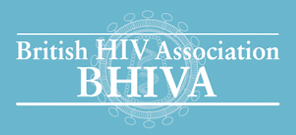Draft BHIVA treatment guidelines (2015): the most significant changes for a decade
1 August 2015. Related: Guidelines.
Simon Collins, HIV i-Base
 On 22 June 2015, the British HIV Association (BHIVA) posted a draft of the new HIV treatment guidelines.
On 22 June 2015, the British HIV Association (BHIVA) posted a draft of the new HIV treatment guidelines.
Although minor revisions were made in 2013, mainly to include recent HIV drug approvals and the management of coinfection with hepatitis, this is the first major update since 2012.
The most significant changes address the question of when to start treatment together with choice of drugs.
- Based on preliminary results from the START study, the draft guidelines recommend removing the use of a CD4 threshold for starting treatment. This recognises that START reported the benefits of treatment outweigh the risks, even at CD4 counts above 500 cells/mm3.
- Although not explicitly connected in the document (perhaps related to the timing of the news from START) this recommendation for treatment irrespective of CD4 count should strengthen the use of early ART during primary HIV infection (PHI) and for access to treatment as prevention (TasP).
- For the first time since its approval back in 1998, the NNRTI efavirenz – and therefore Atripla as a fixed dose combination (FDC) – is no longer recommended for first-line therapy.
- The NNRTI rilpivirine had been promoted in the proposed draft from “alternative” to “preferred” first-line therapy. Caveats include that this is only when baseline viral load is <100,00 copies/mL, that more data support its use with tenofovir/FTC as the NRTI background, and (hopefully) that this recommendation is only for people who are likely to be adherent and who are happy to take meds with food.
- Older drugs that have not been widely used for many years have now been dropped even as alternative options. These include lopinavir/r, fosamprenavir/r, nevirapine, ddI and d4T.
- Controversial – due to a lack of data supporting equivalence – 3TC and FTC are not seen as interchangeable options, especially in use with tenofovir.
- The importance of pharmacology and drug interactions is highlighted as an increasingly important concern.
- Fixed dose combinations (FDCs) are not prioritised over separate component combinations.
- Approximately one third of the guidelines cover management of 11 special populations. These are TB coinfection; hepatitis coinfection; HIV and cancer, neurological complications, kidney disease, cardiovascular disease, women, mental health, adolescents, bone disease and HIV in older people.
- A new ARV chart is included on food interactions, produced by the pharmacology department at Liverpool University.
COMMENT
Many of the changes in the proposed draft guidelines should lead to improved care, better treatment and easier access to treatment.
It is unfortunate that the consultation period closed on the day before IAS 2105 given this would be a likely forum for new data. As the BHIVA guidelines were already six months over schedule, an additional few days would have enabled people to comment based on seeing the most recent data.
Reference
2015 BHIVA Guidelines for the Treatment of HIV-1-Positive Adults with Antiretroviral Therapy.
http://www.bhiva.org/treatment-guidelines-consultation.aspx

